Coveris’ MonoFlex Fibre packaging range offers pre-made bags and form-fill-seal solutions made of paper, aiming to help customers transition into high-barrier yet recyclable packaging solutions in compliance with EU regulation.
As per the upcoming Packaging and Packaging Waste Regulation, all packaging sold on the European market must be reusable or recyclable by 2030. Plastic packaging materials will be subject to a fee, and producers will be responsible for the end-of-life treatment of a pack.
Brands are therefore transitioning into recyclable plastic or paper packaging solutions. Coveris intends to meet this demand with the MonoFlex Fibre range.
The range is split into two parts. MonoFlex Fibre is a multilayer structure designed to maximize paper share, while MonoFlex Fibre Pure constitutes a single layer of functional paper. Within each are several subcategories for both primary and secondary packaging, with each said to offer ‘excellent’ sealing and barrier properties.
All specifications are said to be recyclable and provide the ‘right level’ of protection and barrier properties against grease, moisture, oxygen, light, or mineral oils. Their ‘excellent’ printability in roto, flexo, and digital printing is set to help manufacturers optimize the aesthetic appeal of their packaging.
Coveris emphasizes that customers ‘will not require major changes’ in their existing machinery to adopt the solution. It has apparently been proven as a fast, efficient solution on common packing lines.
“As part of our No Waste strategy, Coveris’ focus is on selecting the most eco-efficient and high-performing packaging for each product, rather than simply deciding between paper or plastic,” explained Melinda Bonamour, market development director Paper Flexibles at Coveris. “By expanding our portfolio to include paper-based options and reducing plastic usage in packaging for items needing external protection, we aim to offer customers the best solution aligned with their brand vision and product requirements.
“We aim to meet the needs of primary and secondary packaging for brands in various sectors such as dry food, tea, confectionery, fresh produce, biscuits, frozen food and dried pet food, by providing both full paper and recyclable paper/plastic structures. We are confident that these new solutions will be the go-to-resource for producers seeking recyclable and effective paper packaging options.”
ProAmpac also sought to bring efficient, appealing, and recyclable paper solutions to European customers by releasing ProActive Recyclable FibreSculpt, a high-barrier, 90% fibre-based thermoforming solution, on the European market. It is designed to fulfil consumer demand for renewable packaging materials and provide brands with premium aesthetics and an enhanced shelf appeal.
Fazer has also packaged its Oat Rice Pies in laminate-free paper designed by UPM Specialty Papers. The solution is hoped to improve recyclability, but carry over the barrier protection and heat seal properties from conventional plastics.
More recently, Chevler has expanded its Meat Saver Paper range with brightly-coloured protective paper. It is intended to achieve brighter, more vibrant colours in meat packaging while simultaneously keeping the product safe and fresh.
Source:














